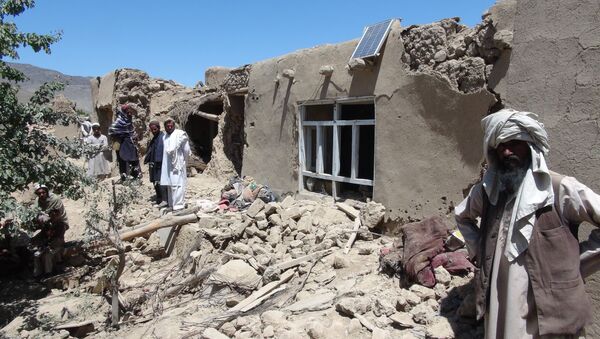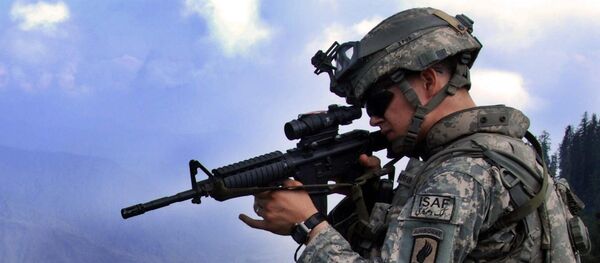Commenting on the Bureau of Investigative Journalism's report about the stepping up of US airstrikes in Afghanistan in an interview with Sputnik, Mohammad Hashem Alokozai, head of the Afghan parliament's Homeland Security and Defense Committee, pointed out that such operations fail to improve the situation in his country.
According to him, an increase in the number of US airstrikes is out of sync with the will of the Afghan people.
He did not rule out that "if military spending is spent on the peace process, there will be a possibility of peace and security being in place in Afghanistan."
"Unfortunately, the Afghan President, who should deal with the cases of all those injured and killed by these attacks including civilians and children, as well as find the perpetrators, does not want to investigate these cases, so as not to upset foreigners, the US embassy or other international organizations," Alokozai added.
He was echoed by General Nazif Zaki, a member of the Afghan parliament, who attributed the flop and negative consequences of the US airstrikes in Afghanistan to lack of coordination between the US military and Afghan security and defense forces.
"Enemies use women and children as human shields, which is why foreign forces' airstrikes [also] kill civilians. Thus far, the US air operations in Afghanistan have been ineffective, and in most cases they've resulted in casualties among civilians and Afghan soldiers," Zaki said.
He added that "no one will complain about the killing of innocent people" given that the United States remains "one of the world's superpowers."
"Protests in Afghanistan have no effect on the government, public organizations or the media. The international community and Afghan allies should demand the punishment of the perpetrators so that these crimes can no longer be committed," Zaki concluded.
According to the Bureau of Investigative Journalism, since early 2017, the US Air Force has launched a total of 2,353 airstrikes across Afghanistan, compared to 1,072 such strikes in 2016.
Clue was in the numbers #airstrikes graph said @realDonaldTrump escalating Afghanistan war before 4,000 troops boost https://t.co/6odoEqaIaD pic.twitter.com/WxBvNmTMy9
— The Bureau (@TBIJ) 22 августа 2017 г.
The bureau also cited 1,984 missiles and bombs that the US Air Force dropped in Afghanistan in 2017, "nearly three times the number it had released at the same time last year."
The United Nations Assistance Mission in Afghanistan (UNAMA) registered a 43-percent increase in civilian casualties from aerial operations during the first six months of this year compared to the same period in 2016; 95 people were killed and 137 more injured in these operations, according to UNAMA.
Trump refused to set any deadlines for US reductions in force levels or military withdrawals from Afghanistan. He also emphasized that he would give his military commanders the freedom to wage war more rapidly and ruthlessly in order to destroy alleged terrorist targets.
Afghanistan is in a state of political and social turmoil, with government forces fighting the continuing Taliban insurgency. The instability has persisted in the country since the 2001 US-led invasion to defeat the Taliban and al-Qaeda in the wake of the 9/11 attacks in the United States.



